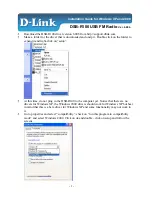
Encryption Key Loading Guide
7
© Tait Electronics Limited September 2006
numbers. Each octet must have odd parity (an odd number of 1s
in the binary number).
■
For AES encryption, enter a key variable of the required length.
There are no parity restrictions. For example, enter 32 octets for
AES 256.
Important
Once you have entered a key variable into the ,
you can no longer view it.
The also lets you group keys into key groups for easier loading
or zeroize keys you no longer want to use.
Connecting the to the Target Device
1.
Connect the cable attached to the Tait adapter to the keyload port on
the back of the . (This cable provides power from the
to the adapter.)
2.
Connect the other end of the adapter to the target device using the
appropriate cabling.
■
For a TM9100 mobile, connect a TPA-SV-006 programming lead
(9-pin to RJ12) to the programming (microphone) port.
■
For a TP9100 portable, you need the above programming lead and
a TPA-SV-007 cable (RJ12 to TPA) as well.
■
For a P25 Console Gateway, connect an ordinary DB9 to DB9
extension cable to the connector marked DIG at the rear of the
gateway module.
Figure 1
Connecting the to a TP9100 Portable






























